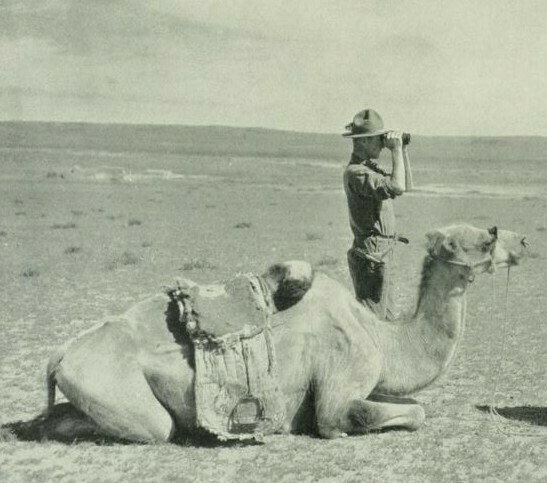The quintessential explorer, Roy Chapman Andrews organized and led multiple scientific expeditions tfor the American Museum of Natural History. Andrews was also a prolific author and celebrity – his character was tailor-made for the Jazz Age, which had “a taste for audacious ventures, a love of flamboyance and craving for excitement.” (Gallenkamp p. 300)
Andrews’ scientific field was mammalogy, but his greatest skill was as an expedition leader, assembling teams of scientists and leading them to remote locations where they could make great discoveries. Through negotiation, networking, bribes (“squeeze”), and occasional intimidation, Andrews managed to pull off five wildly successful scientific expeditions in China and Mongolia. His team, including lead paleontologist Walter Granger, discovered the first dinosaur eggs, the first Velociraptor fossil, and numerous other species of dinosaurs and extinct mammals spanning millions of years.
Born in Wisconsin in 1884, Andrews attended Beloit College and then traveled to New York City determined to work at the American Museum of Natural History. Working his way up through the ranks, he successfully completed several mammal collecting expeditions before conceiving of, raising funds for, and planning the logistics of the Central Asiatic Expedition. The main scientific focus would be on paleontology and early human ancestors. Beginning with the first field season in 1922, the paleontological discoveries were immediate and spectacular, but the search for early hominid fossils was unsuccessful.
Andrews and the other team members successfully dealt with sandstorms, extreme heat and cold, venomous snakes, bandits, and bureaucrats. Andrews also survived a serious wound after he accidentally shot himself in the leg.
When not actually on an expedition, Andrews preferred to spend most of his time living among other expatriates in Peking. In 1931, shut out by the political situation in China from doing more fieldwork, he would play polo during the day, and then work late into the night on his writing. Around 3:00 A.M., he would ring up fellow adventurers Sven Hedin and Davidson Black to go out to “cafés of somewhat dubious reputation to have scrambled eggs, dance with the Russian girls, and then go home to bed.” (Andrews in Gallenkamp p. 277). He eventually returned to the United States, was president of the Explorers Club for several years, and finally became the Director of the American Museum of Natural History. He retired in 1942 and wrote several more books before he passed away in 1960.
Reference: Gallenkamp, Charles 2001 Dragon Hunter: Roy Chapman Andrews and the Central Asiatic Expeditions. Viking Press.
Revised from a previous post.
#1920s #JazzAge #paleontology
